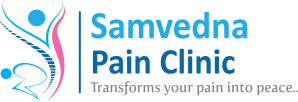
Extracorporeal Shock Wave Therapy (ESWT)
Chronic pain can arise from a variety of conditions, including musculoskeletal injuries, tendonitis, plantar fasciitis, and more. Traditional treatment options often involve medications, physical therapy, or invasive procedures, which may not always provide satisfactory results or carry risks of side effects or complications. Extracorporeal Shock Wave Therapy (ESWT) offers a non-invasive alternative that harnesses the power of acoustic waves to stimulate healing and relieve pain.
Extracorporeal shock wave therapy (ESWT) is a modern and highly effective treatment method. High-energy sound waves are introduced into the painful areas of the body. With this innovative treatment, pathological alterations of tendons, ligaments, capsules, muscles and bones can be eliminated systematically. Together with being a non-surgical therapy with no need for painkillers makes it an ideal therapy to speed up recovery and cure various indications causing acute or chronic pain.
Acoustic waves with high energy peak used in Shockwave therapy interact with tissue causing overall medical effects of accelerated tissue repair and cell growth, pain reduction and mobility restoration. It can be defined as a wave with a rapid rise of pressure within a very short time and then having a gradual decrease of pressure with a small negative pressure phase.
The beneficial effects of shock wave therapy are often experienced after only 1 or 2 sessions. The therapy eliminates pain and restores full mobility, thus improving your quality of life.
THERAPY SEQUENCE
Step 1 : Location of the area to be treated
The area to be treated is located using palpation in order to deliver the therapy precisely.
Step 2 : Gel application
Sufficient amount of gel is applied to the area located in step 1. Use of gel is necessary to transfer the acoustic waves efficiently and smoothly.
Step 3 : Therapy initiation
The Shockwave applicator is slightly pushed against the area to be treated and the start button is pressed.
Biological Effects Of Shock Wave Therapy
Stimulation of Tissue Regeneration:
Pain Modulation:
Reduction of Inflammation:
Tissue remodelling:
- a. Neovascularization and angiogenesis (formation new blood vessels & increase blood flow)
- b. Muscle relaxation
- c. Stimulation of local metabolism
- d. Osteogenesis and bone remodeling (New bone formation and bone repair)
- e. Initiation and acceleration of tendon healing process
- f. Re-absorption of calcium deposits
- g. Supports collagen production
Applications
Shock wave therapy can be used in wide varieties of pain conditions. Some common indications are mentioned below:
- a. Shoulder pain (supraspinatus tendinitis)
- b. Calcified bicipital tendinosis
- c. Frozen shoulder syndrome
- d. Tennis Elbow / Golfers Elbow
- e. Heel pain (Tendo Achilles tendinosis)
- f. Plantar fasciitis or heel spurs
- g. Trigger points
- h. Muscle and tendon strains – (Partial / Interstitial tear)
- i. Ligament sprains
- j. Dorsalgia
- k. Coccxyalgia (Tailbone pain)
- L. Runners Knee Pain
- m. Patellar tendinopathy (Jumper’s knee)
- n. Shin splints (Leg Pain over shin)
Benefits of Extracorporeal Shock Wave Therapy
Non-Invasive: ESWT is performed on an outpatient basis and does not require incisions or anesthesia, minimizing risks and downtime.
Highly Effective:
No Side Effects:
Quick Recovery:
FAQs
1. Will Shockwave therapy help me?
ANS. Most patients with chronic pain problems have been through various unsuccessful types of treatments. Up to 80% of the same patients worldwide report that Shockwave therapy has helped them eliminate their problem.
2. Does the treatment hurt?
ANS. There may be a slight feeling of discomfort during the treatment, depending on the level of pain the patient is already experiencing in the area. However, since the treatment lasts only about five minutes, most patients are able to tolerate this discomfort. Additionally, the intensity of the treatment can be adjusted throughout the session.
3. How many treatments will I need?
ANS. The number of treatments varies depending on the indication and tissue response. The effect of the treatment is cumulative, so you will typically need more than one treatment. Most indications require 3–6 treatments which are done 3–10 days apart, depending on the patient’s tolerance and their tissue response. Very often though, you will experience relief right after the first treatment.The number of treatments varies depending on the indication and tissue response. The effect of the treatment is cumulative, so you will typically need more than one treatment. Most indications require 3–6 treatments which are done 3–10 days apart, depending on the patient’s tolerance and their tissue response. Very often though, you will experience relief right after the first treatment.
4. Are there any restrictions after treatment?
ANS. It is recommended that patients refrain from physical activity, especially one that would involve the treated region, for about 48 hours following each treatment session. Icing and gentle stretching is advisable to enhance its effectiveness.

